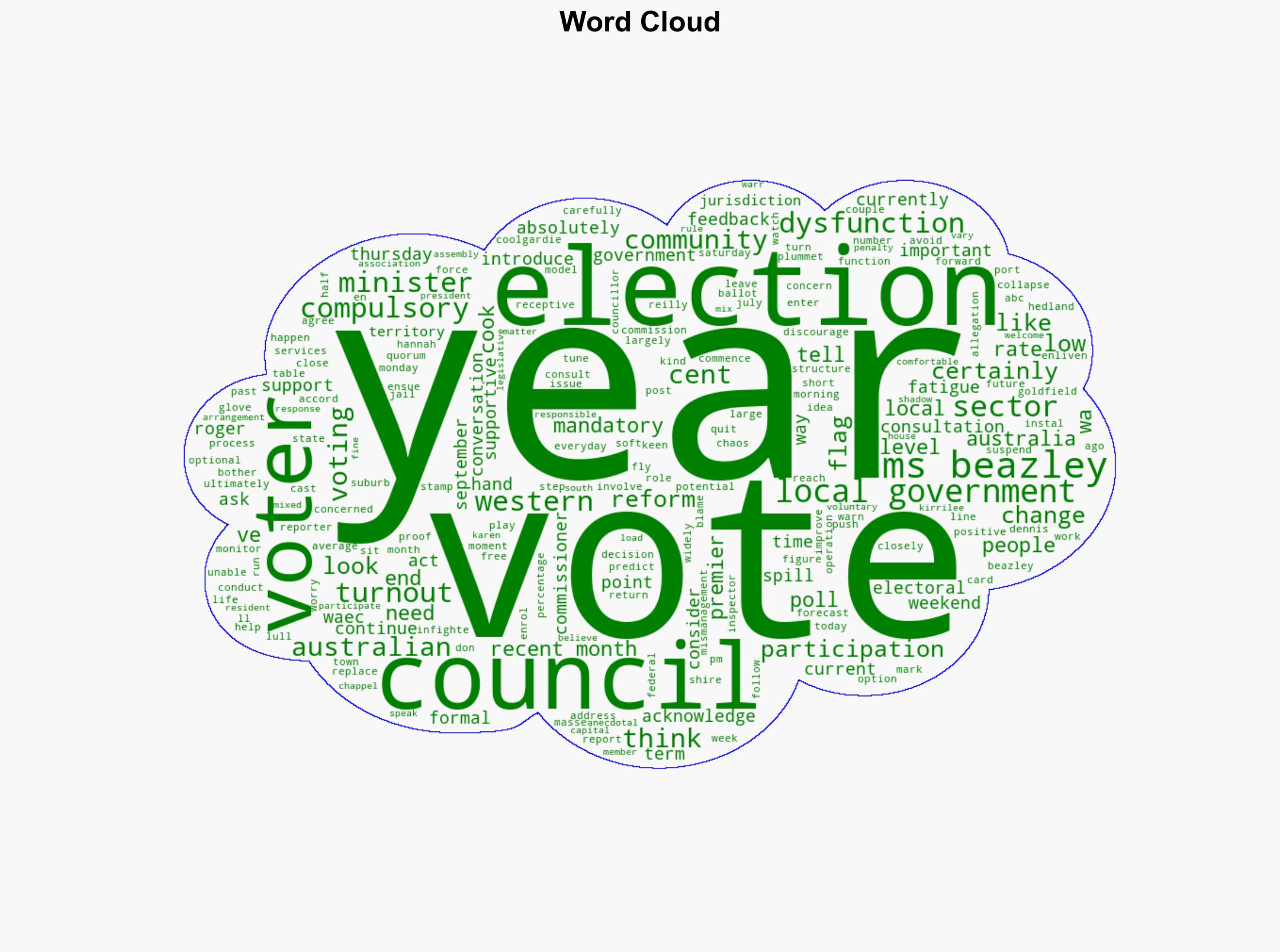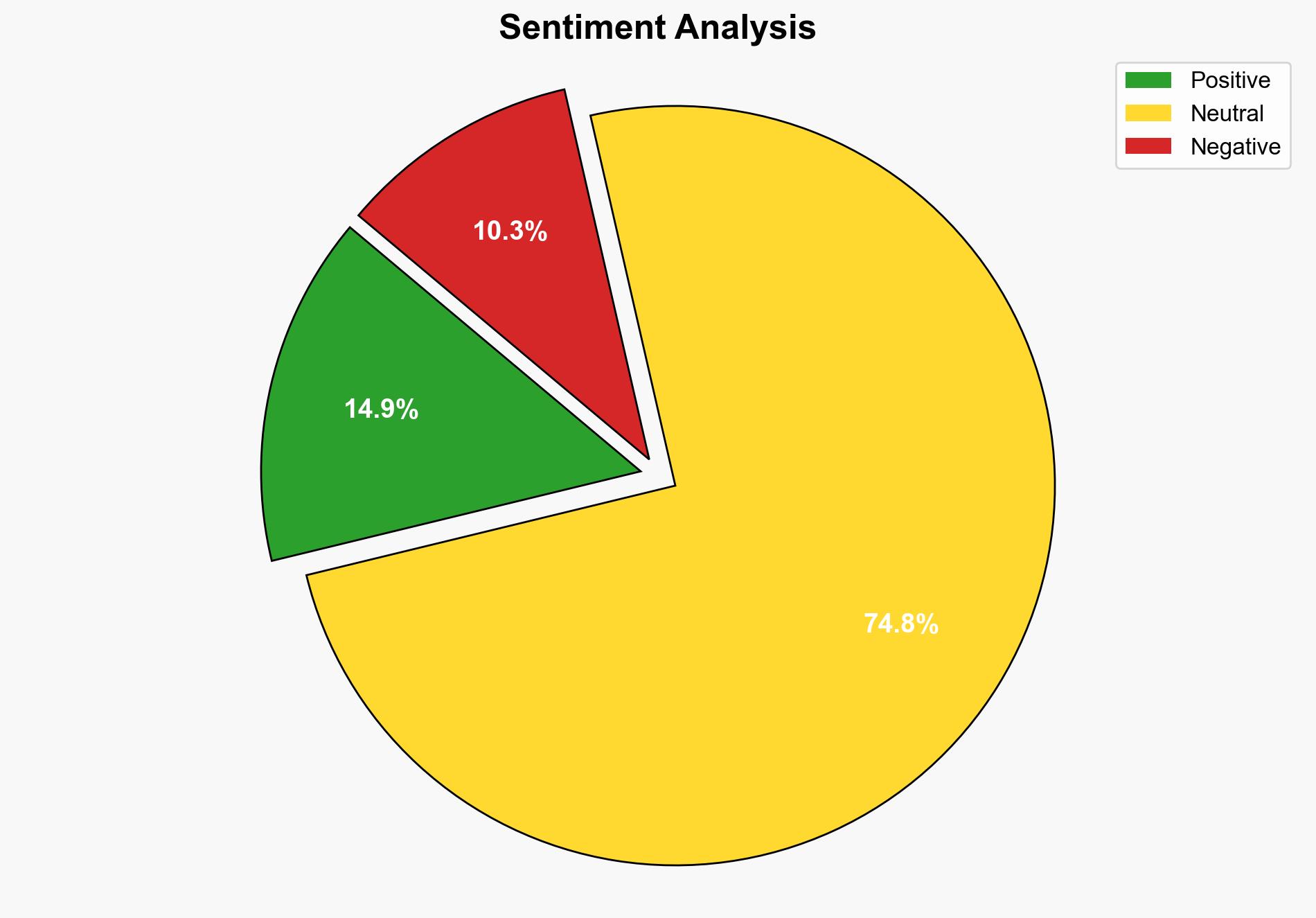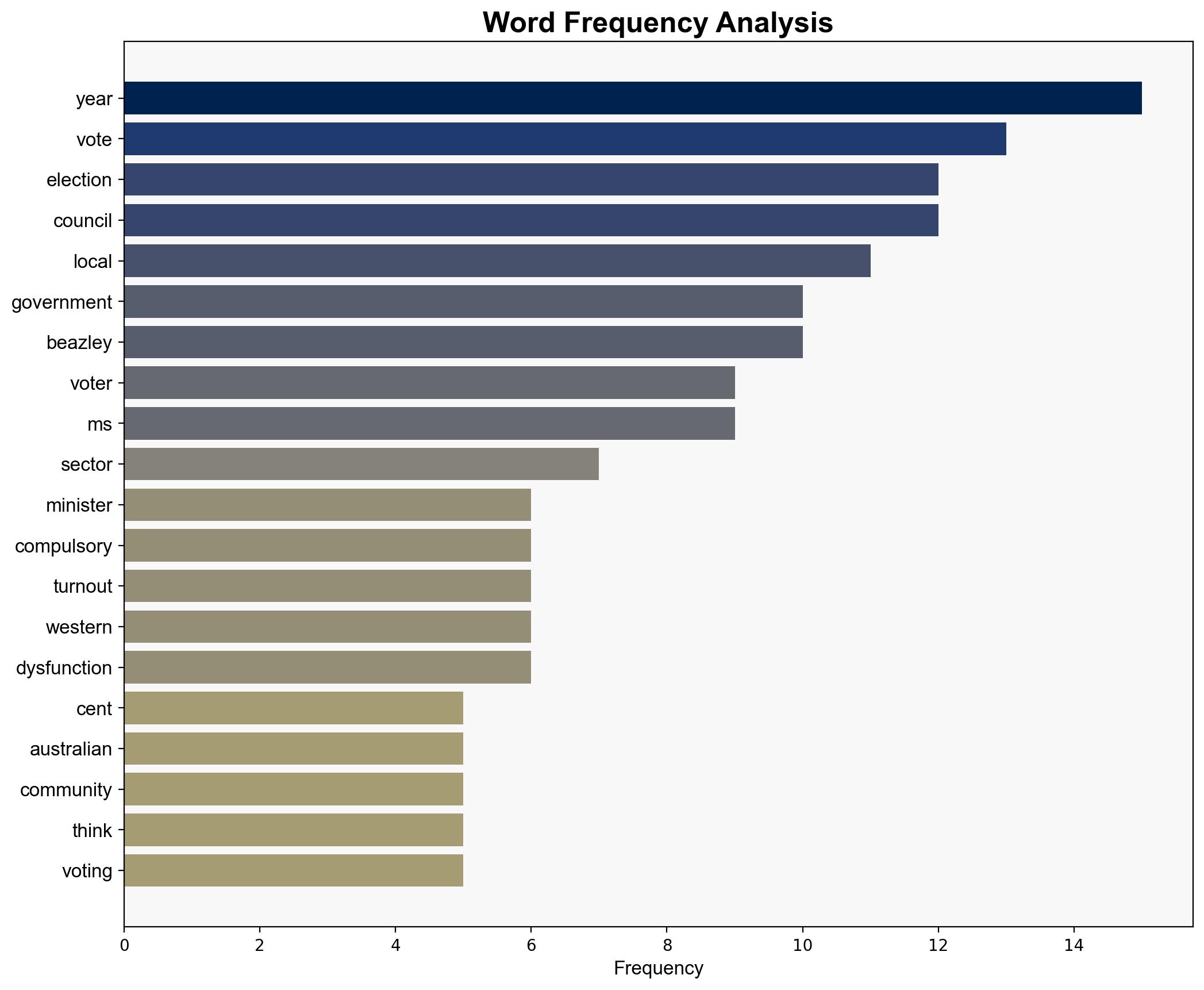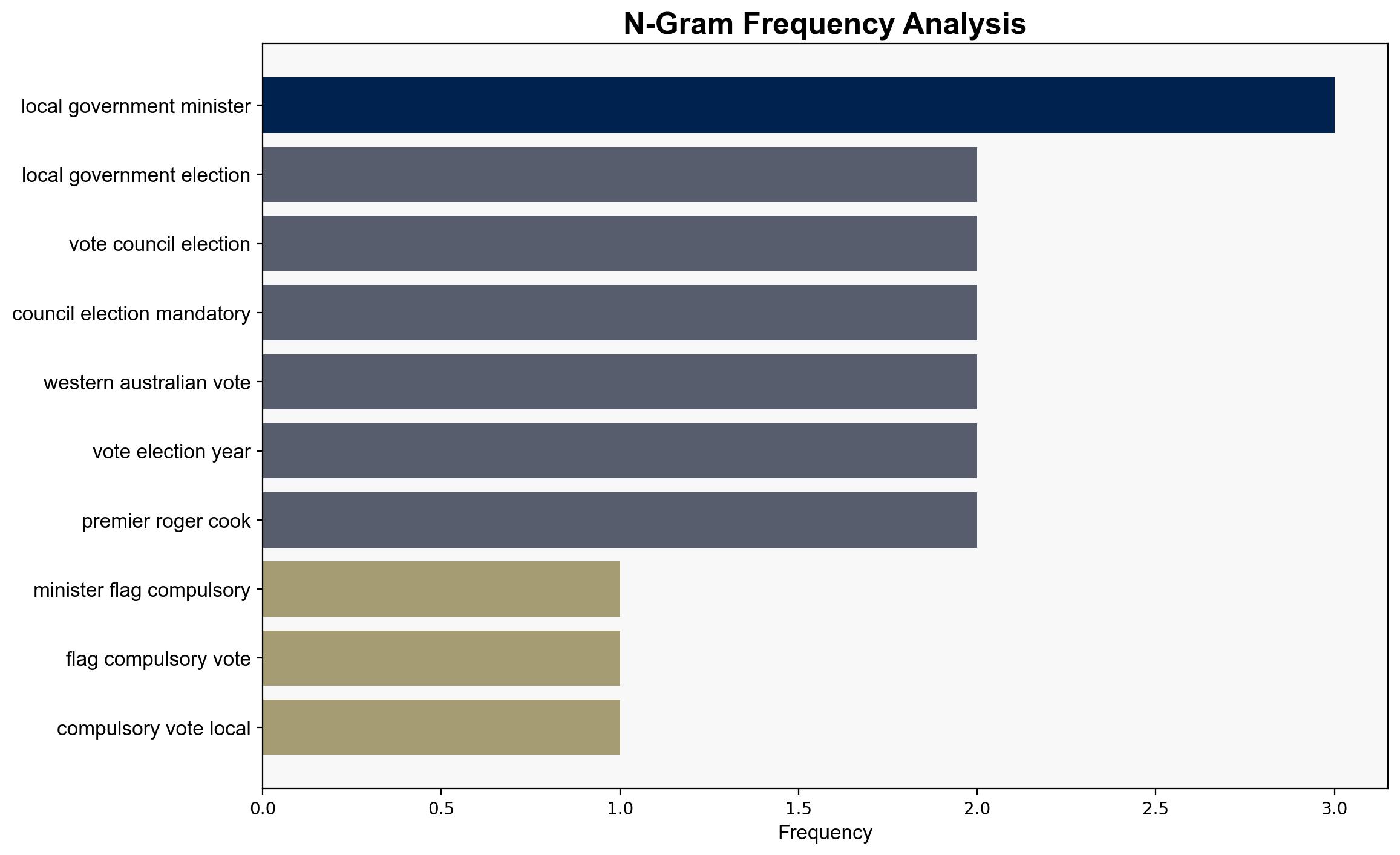West Australians face compulsory council election voting amid low turnout – ABC News (AU)
Published on: 2025-10-18
Intelligence Report: West Australians face compulsory council election voting amid low turnout – ABC News (AU)
1. BLUF (Bottom Line Up Front)
The most supported hypothesis is that compulsory voting in local council elections will likely increase voter turnout, addressing concerns over low participation and council dysfunction. Confidence in this hypothesis is moderate, given the potential for voter fatigue and resistance to change. It is recommended to proceed with formal consultations to gauge public sentiment and prepare for potential implementation.
2. Competing Hypotheses
1. **Compulsory Voting Will Increase Turnout and Improve Governance**: Making voting mandatory in local council elections will lead to higher voter turnout, reducing voter fatigue and improving governance by ensuring more representative participation.
2. **Compulsory Voting May Not Significantly Impact Turnout or Governance**: Despite making voting mandatory, voter turnout may not significantly improve due to entrenched voter apathy and dissatisfaction with local governance, potentially leading to minimal changes in council functionality.
Using ACH 2.0, the first hypothesis is better supported by the data, as compulsory voting has historically led to higher participation rates in other contexts. However, the second hypothesis remains plausible due to existing voter fatigue and dissatisfaction.
3. Key Assumptions and Red Flags
– **Assumptions**: It is assumed that compulsory voting will automatically lead to increased turnout and improved governance. Another assumption is that the public will be receptive to this change.
– **Red Flags**: Potential resistance from the public and stakeholders who may view compulsory voting as an infringement on personal freedom. The assumption that increased turnout will directly lead to better governance may overlook deeper systemic issues.
– **Blind Spots**: Lack of detailed data on public opinion regarding compulsory voting and the specific causes of voter apathy and council dysfunction.
4. Implications and Strategic Risks
– **Patterns**: Low voter turnout and council dysfunction are recurring issues, suggesting systemic problems within local governance structures.
– **Cascading Threats**: Continued low participation could exacerbate governance issues, leading to increased public dissatisfaction and potential instability in local councils.
– **Potential Escalation**: If compulsory voting is implemented without adequate public support, it could lead to backlash and further disengagement.
5. Recommendations and Outlook
- Conduct comprehensive public consultations to assess sentiment towards compulsory voting and address concerns.
- Develop educational campaigns to inform the public about the benefits of increased participation.
- Scenario Projections:
- **Best Case**: Successful implementation of compulsory voting leads to increased turnout and improved governance.
- **Worst Case**: Public backlash against compulsory voting results in further disengagement and governance issues.
- **Most Likely**: Moderate increase in turnout with gradual improvements in governance, contingent on addressing systemic issues.
6. Key Individuals and Entities
– Hannah Beazley
– Roger Cook
– Dennis Reilly
7. Thematic Tags
local governance, voter turnout, electoral reform, public policy





